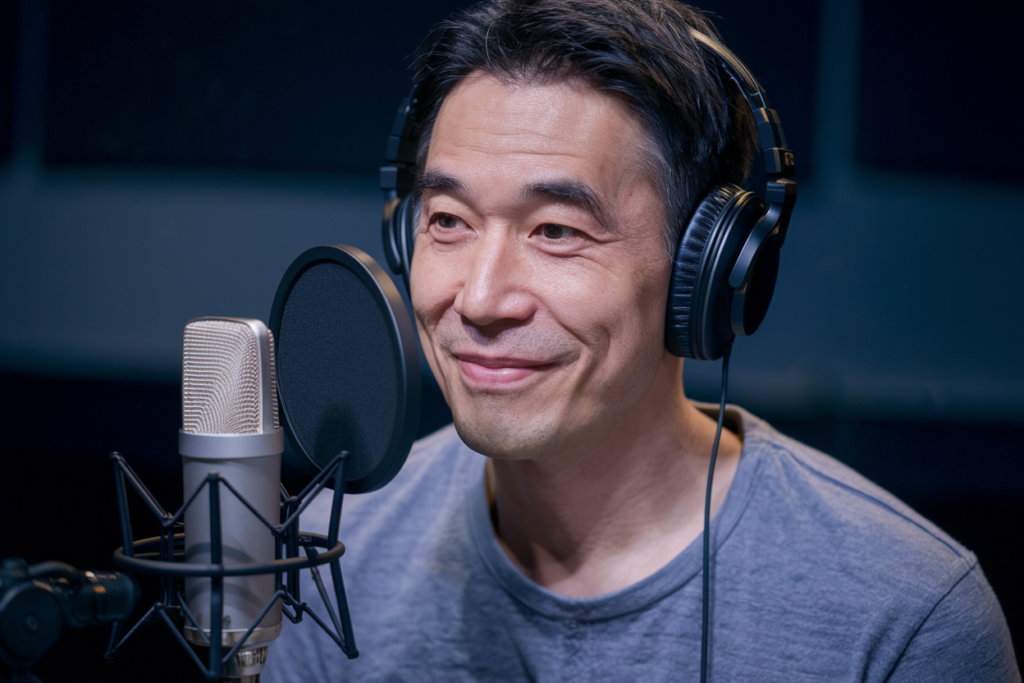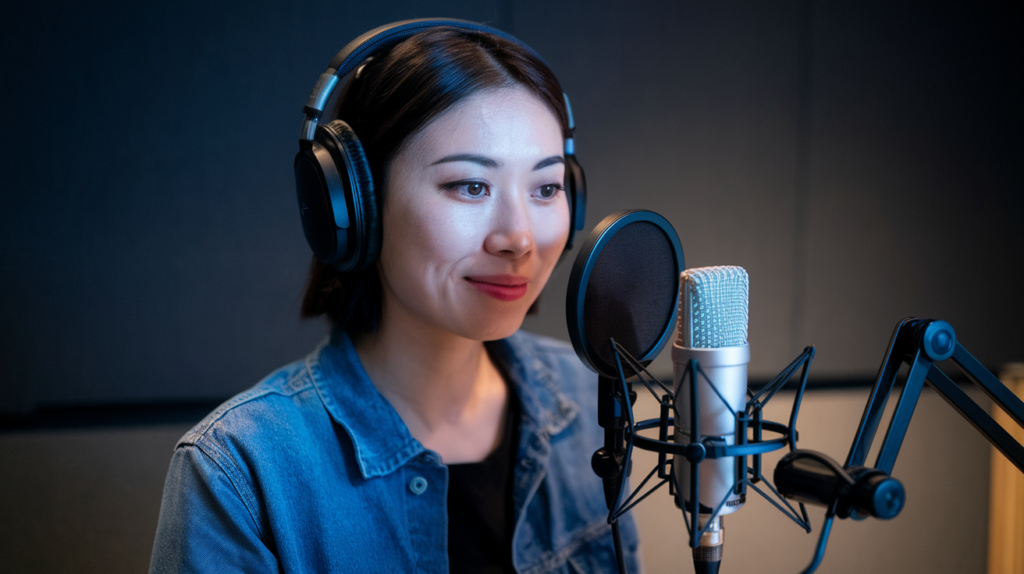Key Takeaways
- Cultural Nuances Matter: Understanding the cultural context is essential for creating effective Japanese voiceovers, as different genres require varying levels of expressiveness and subtleties.
- Translation Quality is Crucial: Accurate translations that also adapt culturally are vital to preserve the original message and emotional tone in voiceover projects.
- Voice Acting Techniques Vary: Mastery of distinct vocal styles used in anime, video games, or commercials is important for delivering authentic performances that resonate with audiences.
- Fast Turnaround Challenges: The demand for quick delivery can compromise quality; balancing speed with attention to detail is necessary for impactful results.
- Limited Talent Pool: The scarcity of highly skilled voice actors makes it challenging to find suitable talent who can bring authenticity and depth to performances across various media formats.
- Localization is Key: Effective localization goes beyond translation, requiring an understanding of cultural nuances to ensure scripts maintain their intended humor, emotion, and intensity.
Ever wondered why some Japanese voiceover performances just don’t hit the mark? The world of Japanese voiceover work is vibrant and dynamic, but it’s not without its challenges. From cultural nuances to industry expectations, various factors can hinder the quality and effectiveness of a project.
Overview of Japanese Voiceover Work
Japanese voiceover work encompasses a dynamic array of performances across various media, including anime, video games, commercials, and dubbing for foreign films. The industry thrives on its unique blend of artistry and cultural expression, making it a vibrant field for voice talent.
Understanding the nuances is crucial. Cultural expectations often influence how voice actors approach their roles. For instance, different genres may demand varying levels of expressiveness or subtlety from voice artists. This means that what works in one context might not resonate in another.
The selection process for voice over talent can be quite competitive. Many aspiring voice actors undergo rigorous training to hone their skills, mastering techniques that set them apart in this saturated market. Clients look for versatility and depth in performances, ensuring that the final product aligns with their vision.
Language barriers present additional challenges when adapting content for Japanese audiences. Translating scripts isn’t just about words; it’s about conveying emotions and cultural references effectively. This complexity underscores the importance of hiring skilled professionals who understand both language and culture deeply.
As you consider engaging with Japanese voiceover projects, keep these factors in mind to ensure successful collaborations and compelling results.
Common Problems in Japanese Voiceover Work
Japanese voiceover work presents unique challenges that can affect the overall quality of projects. Understanding these common issues is essential for ensuring effective communication and successful outcomes.
Quality of Translation
Translation plays a crucial role in voiceover projects. Inaccurate translations can lead to misinterpretations, altering the intended message. When working with voice actors, it’s vital to ensure that scripts are not only translated accurately but also adapted culturally. This adaptation process includes choosing words and phrases that resonate with the target audience while maintaining the original tone.
Cultural Nuances and Context
Cultural nuances significantly impact how voiceovers are perceived. Different genres demand various levels of expressiveness from voice talent, which might not always align with Western norms. For instance, anime often requires exaggerated expressions, while commercials might focus on subtlety. Understanding these cultural expectations ensures that your project meets audience preferences and conveys emotions effectively.
Voice Acting Techniques
Voice acting techniques vary widely across cultures as well. Japanese voice artists often employ distinct vocal styles tailored to specific media formats—whether it’s anime or video games. Mastery of these techniques is essential for delivering authentic performances that resonate with listeners. Selecting a skilled voice actor who understands these nuances helps elevate the quality of your project, ensuring it stands out in a competitive market.
By addressing translation accuracy, cultural context, and appropriate acting techniques, you enhance your chances of creating impactful Japanese voiceovers that truly connect with audiences.
Industry Challenges
The Japanese voiceover industry faces several significant challenges. Understanding these hurdles helps potential clients navigate the complexities of hiring voice talent effectively.
Demand for Fast Turnaround
Today’s fast-paced media environment drives a demand for quick turnaround times in voiceover projects. Clients often require rapid delivery to keep up with production schedules and marketing timelines. This urgency can compromise quality, as voice artists may rush their performances or skip essential processes like revisions. It’s crucial to balance speed with meticulous attention to detail, ensuring that the final product resonates well with audiences.
Limited Talent Pool
The pool of qualified voice actors in Japan remains relatively small compared to the growing demand for voiceovers across various media platforms. While many aspiring performers undergo rigorous training, not all possess the unique skills needed for specific genres like anime or video games. This limitation makes it challenging to find suitable talent who not only fits your project’s requirements but also brings authenticity and emotional depth to their performances. Collaborating closely with talent scouts can help you identify exceptional voices tailored for your project needs.
Impact on Product Quality
Voiceover work in Japan presents unique challenges that can significantly affect product quality. Understanding these issues helps ensure your projects resonate with audiences.
Viewer Experience
The viewer’s experience hinges on the effectiveness of voiceovers. When voice actors don’t fully capture character emotions or cultural nuances, it leads to a disconnect. This disconnect can diminish engagement and impact audience retention. For instance, a video game that requires dynamic expression may falter if the voice talent delivers lines monotonously. The depth of emotion plays a crucial role in keeping viewers invested, particularly in genres like anime where expressiveness is vital. Moreover, an authentic performance reflects the story’s essence, enhancing immersion and enjoyment for your audience.
Localization Issues
Localization matters immensely in Japanese voiceover projects. Effective localization goes beyond mere translation; it involves adapting scripts to fit cultural contexts while maintaining original intent. If localization fails, you risk losing key elements of humor, emotion, or intensity that define the narrative. Inaccurate translations can lead to awkward phrasing or misinterpretations that alienate viewers who expect authenticity from characters and narratives they love. Choosing experienced voice artists familiar with both languages ensures nuanced performances and culturally relevant adaptations—vital for connecting with your target demographic effectively.
Understanding these factors helps enhance overall product quality in Japanese voiceover work, leading to more engaging and successful outcomes for your projects.
Conclusion
Navigating the landscape of Japanese voiceover work involves acknowledging its unique challenges and complexities. By understanding cultural nuances and industry expectations you’ll enhance both the quality of your projects and viewer engagement.
Paying close attention to translation accuracy and effective localization can prevent misinterpretations that detract from the intended message. Remember that expressiveness varies across genres so mastering these techniques is key for authentic performances.
Striking a balance between speed and detail during production ensures that your final product resonates with audiences. Ultimately recognizing these critical factors will lead to more successful outcomes in your voiceover endeavors, making them not just effective but truly engaging as well.
Frequently Asked Questions
What is the focus of the article on Japanese voiceover performances?
The article explores the complexities of Japanese voiceover performances, addressing why some may fall short. It highlights cultural nuances and industry expectations that impact quality and effectiveness in various media like anime, video games, and dubbing.
Why are cultural nuances important in Japanese voiceover work?
Cultural nuances influence how voiceovers are perceived. Different genres require varying levels of expressiveness, which may not align with Western norms. Understanding these subtleties ensures a more authentic and engaging performance.
What challenges does the Japanese voiceover industry face?
The industry faces several challenges, including fast turnaround times that can compromise quality, a limited talent pool for specific genres, and the need for accurate translation and localization to maintain authenticity.
How does expressiveness affect viewer engagement in voiceovers?
Expressiveness is crucial in genres like anime where emotional depth enhances viewer investment. Failing to capture character emotions can lead to a disconnect that diminishes audience engagement with the content.
Why is effective localization necessary for Japanese voiceovers?
Effective localization goes beyond mere translation; it adapts scripts to fit cultural contexts while preserving original intent. Inaccurate localization can alienate viewers and undermine narrative authenticity.
What role do talent scouts play in the voiceover industry?
Talent scouts are essential for identifying exceptional voices suited to project needs. Given the competitive nature of the industry, collaborating closely with them helps find qualified actors who deliver authenticity and emotional depth.







